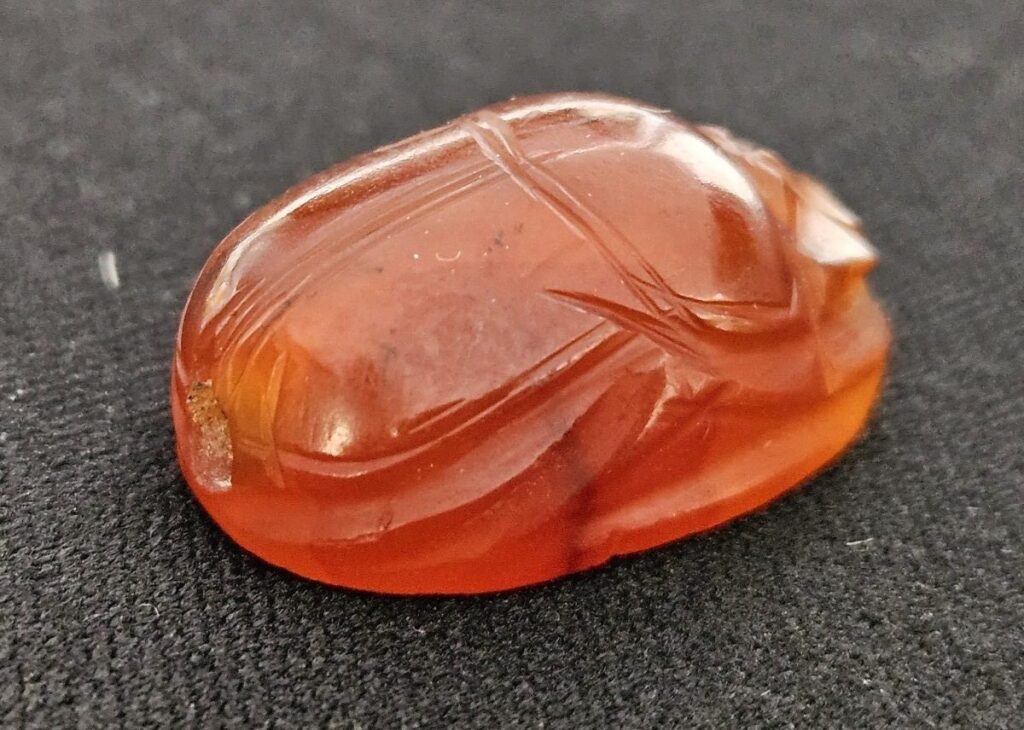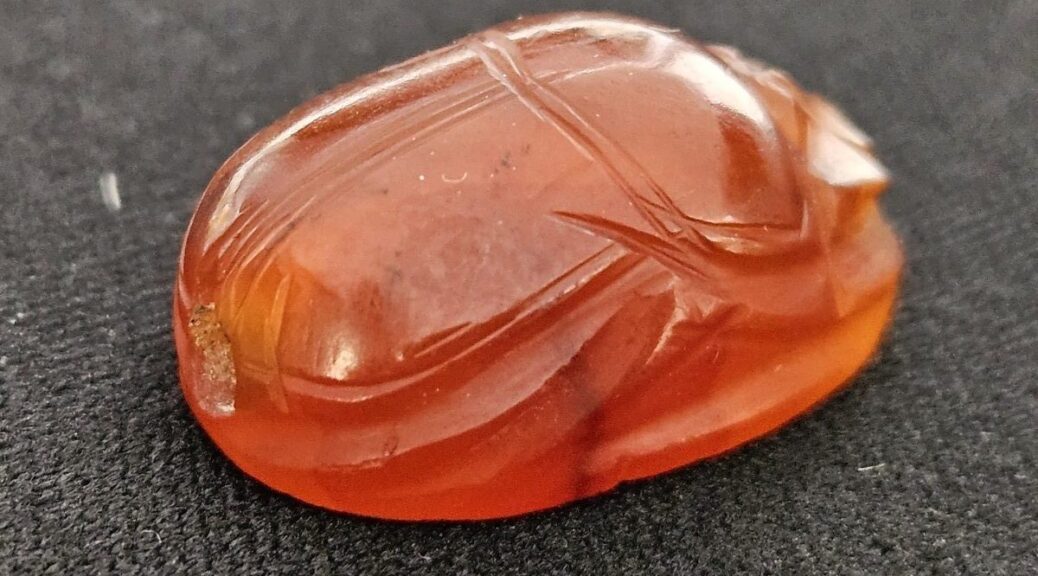Rare 2,800-year-old Assyrian Scarab Seal-Amulet Found in Tabor Nature Reserve
A hiker in northern Israel found a rare scarab seal amulet from the First Temple period on the ground in the Tabor Nature Reserve in Lower Galilee.
A scarab amulet used by an Assyrian official was found recently by Erez Abrahamov, 45, of Paduel. Abrahamov found the scarab near the bottom of Tel Rekhesh, associated with the city of Anaharath mentioned in the Book of Joshua.
The find, announced by the Israel Antiquities Authority (IAA), hints at the possible presence of Assyrian or Babylonian officials in the region during the eighth century BCE.
It may have been used by an Assyrian or perhaps Babylonian official almost 2,800 years ago, at the time of the First Temple.
At first, I thought it was just a stone, but when I picked it up I could see it was engraved, said Erez Avrahamov. Upon closer inspection, he realized it depicted a mythical creature. He contacted the Israel Antiquities Authority about his discovery.
The rare find was transferred to the Israel Antiquities Authority (IAA) as required by law, and Abrahamov received a certificate of appreciation for his efforts.

The scarab, a reddish-brown carnelian stone, is roughly the size of a fingernail. One side of the stone depicts a beetle, while the other is intricately engraved with the figure of a griffin or winged horse. This style of art is typical of the Assyrian and Babylonian civilizations that flourished during this time.
Scarabs were considered sacred by the Egyptians and represented renewal and rebirth.
However, their significance went beyond the spiritual realm. They were used as administrative seals, particularly by high-ranking officials.
The discovery of this scarab in Israel’s Lower Galilee region suggests that Assyrian or Babylonian officials were present at Tel Rekhesh during Assyrian rule.
Archaeologist Itzik Paz, who excavated Tel Rekhesh, studied the find to gain more context. One of the most significant seals discovered here, according to him.
According to Paz, This beetle seal gives us a glimpse into the Assyrian administration that was here. If we can precisely date this seal, it could shed light on Assyrian presence at this strategic site, added Paz.
